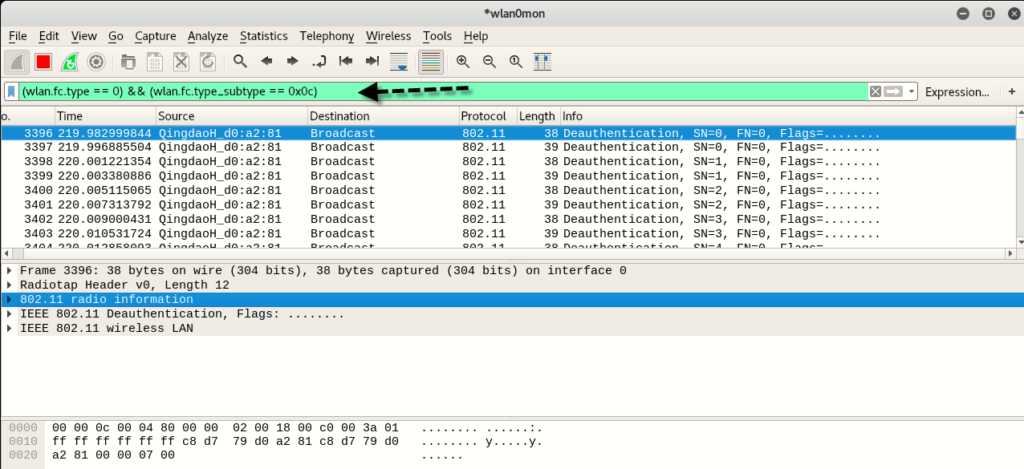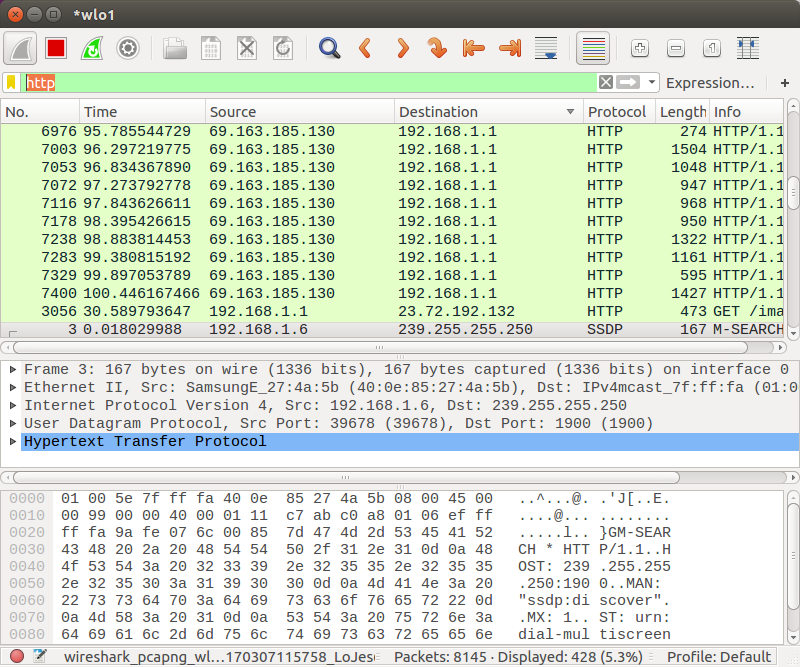


I wanted the Wireshark to capture IP packets with a non-zero DSCP value. In this post, I am going to focus on a capture filter I created to solve a specific problem. Capture filters are less intuitive, as they are cryptic when compared to display filters. Capture filters use a syntax of byte offsets, hex values, and masks coupled with booleans to filter. Display filters aren’t that hard to write once you’ve created a few. Display filters use a syntax of boolean operators and fields that intuitively describe what you’re filtering on. Display filters are used when you’ve captured everything, but need to cut through the noise to analyze specific packets or flows.Ĭapture filters and display filters are created using different syntaxes. Capture filters only keep copies of packets that match the filter. This translates to "pass any traffic except with a source IPv4 address of 10.43.54.65 or a destination IPv4 address of 10.43.54.65".In Wireshark, there are capture filters and display filters.

This translates to "pass all traffic except for traffic with a source IPv4 address of 10.43.54.65 and a destination IPv4 address of 10.43.54.65", which isn't what we wanted. Filter out any traffic to or from 10.43.54.65 The same is true for "tcp.port", "udp.port", "eth.addr", and others. For example, "ip.addr" matches against both the IP source and destination addresses in the IP header. This translates to "pass any traffic except with a source IPv4 address of 192.168.65.129 or a destination IPv4 address of 192.168.65.129"ġ5.Some filter fields match against multiple protocol fields. TCP buffer full - Source is instructing Destination to stop sending data tcp.window_size = 0 & != 1ġ3.Filter on Windows - Filter out noise, while watching Windows Client - DC exchanges smb || nbns || dcerpc || nbss || dns Show only traffic in the LAN (.x), between workstations and servers - no Internet: ip.src =192.168.0.0/16 and ip.dst =192.168.0.0/16ġ2. Show only SMTP (port 25) and ICMP traffic: tcp.port eq 25 or icmpġ1. Display http response code of 200 in network traffic = 200ġ0. Show traffic which contains google tcp contains googleħ. display all protocols other than arp, icmp and dns !(arp or icmp or dns)Ħ. Display traffic with source or destination port as 443 tcp.port = 443ĥ. Display tcp and dns packets both tcp or dnsģ.


 0 kommentar(er)
0 kommentar(er)
